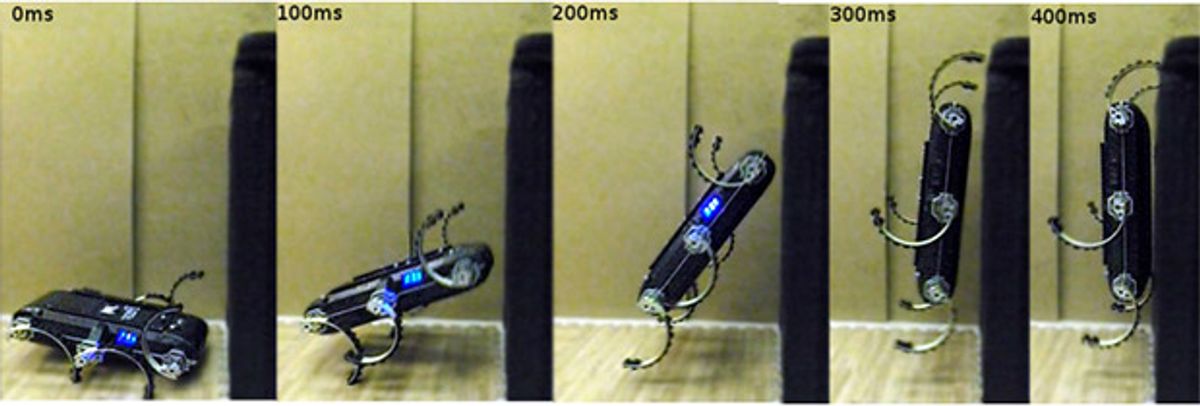Animals can jump. It’s one of the things that makes them so good at getting around. To be more specific, though, animals can generally jump in addition to whatever other method of movement that they employ. We’ve seen lots of robots that can run, and lots of robots that can jump, but with a few exceptions, there hasn’t been a lot of effective crossover, because building a robot that’s physically capable of doing both in a useful manner is not an easy task.
Now University of Pennsylvania researchers, presenting today at 2013 IEEE International Conference on Robotics and Automation (ICRA), showed what happened when they taught their RHex legged robot to jump. The results are pretty darn amazing.
Jumping is very, very useful for a robot. Sand Flea uses it to get over obstacles. RHex can do that and more: It's learning to cross gaps by employing a series of jumps. And if that series of jumps is extended, it provides a quick transition method from stationary to a running gait. Jumping is also good if you’ve got a sensor that you need to be at a certain height to use, or if you need to flip yourself over.
And note that this is not a small robot. The UPenn researchers are using their X-RHex Light, or XRL, which weighs 6.7 kilograms (14.8 pounds) and has a body length of 51 centimeters (20 inches). The robot has six compliant C-shaped legs, each with a diameter of 17.5 centimeters (6.9 inches), independently actuated by Maxon 50-W brushless motors.
Here’s exactly what the robot is capable of:
- A vertical standing leap of 30 centimeters (200 percent of RHex’s standing height)
- A double leap that crosses a 60 centimeter gap (120 percent of RHex’s body length)
- A climbing double leap onto a ledge of 29 centimeters
- A vertical leap-grab onto a desk with a height of 73 centimeters (!)
As far as what’s next, the researchers are experimenting with “a broader range of dynamical transitions, particularly ones exploiting compliance, including the entirely novel prospect of using the leg springs in extension introduced here.” “Dynamic” is a fancy way of saying “exciting” and “novel” is a fancy way of saying “new and cool,” and with extra springy legs throwing some extra energy into the mix, we’re looking forward to seeing what sorts of acrobatics are going to be possible.
"Toward a Vocabulary of Legged Leaping," by Aaron M. Johnson and D. E. Koditschek from the University of Pennsylvania's Kod*lab, was presented this week at ICRA 2013 in Germany.
Evan Ackerman is a senior editor at IEEE Spectrum. Since 2007, he has written over 6,000 articles on robotics and technology. He has a degree in Martian geology and is excellent at playing bagpipes.



